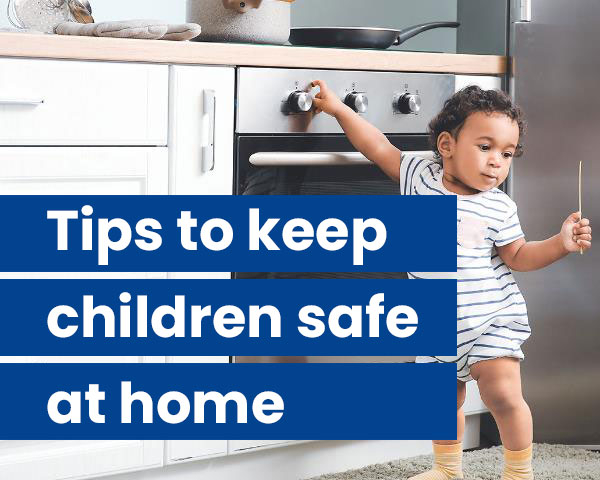There’s only so much you can do to ensure your home is safe and secure for your children. It is impossible to watch your children 24/7, so part of keeping them safe is informing them of all possible risks and how to deal with situations responsibly. To help you keep your children safe, we’ve created a list of a few home safety measures that all children should know:
- NO ROUGHHOUSING IN THE HOME While furniture such as bookcases and TV units can be secured to the wall to lower the risk of tipping, it’s important to teach your children that climbing onto furniture or engaging in reckless behaviour can be potentially harmful to them. They need to understand that even though you’re not around to reprimand them, the rules are there to keep them safe and should therefore not be broken.
- KNOW THEIR FOOD ALLERGIES If your children are allergic to any food group, they need to understand the dangers of how it can affect them. Mark “unsafe” food with a certain sticker to alert the child to steer clear. Also, they should know to accept food only from those who are aware of their food allergies, such as a parent, teacher, or nanny.
- KEEP MEDICINE OUT OF REACH Although your children should know not to touch any medication when you’re not around, it’s best to store all medication in a lockable cabinet out of their reach. If there are certain medications that your child needs, it’s better to leave out the prescribed amount and a note to remind them when to take it.
- LOCKING A DEADBOLT AND EXTERNAL DOORS
Children should know how to lock and unlock a deadbolt (or your chosen locking mechanism). They must understand how the lock works so they can unlock the door in case of an emergency. They also need to know that all external-facing doors should be locked at all times to keep them safe. They should get into the habit of locking the front and back doors, even when people are home. If the doorbell rings, children should alert an adult rather than answering it themselves. - UNDERSTANDING THE ALARM SYSTEM Apart from the fact that homebuyers will pay more for a property if it has a state-of-the-art alarm system, installing one will also help keep your family safe. Once installed, you’ll need to teach your children how to operate the system, as well as what to do should the alarm go off when they are home.
- FOLLOWING THE HOUSEHOLD ESCAPE PLAN Although often overlooked, having an escape plan for your home in case of an emergency is essential. To put this in place, an area of the home should be designated as the central meeting point, and each child should be familiar with the safest route out of the home in the case of an emergency.
- WHO TO CONTACT IN CASE OF AN EMERGENCY A list of all emergency contact details should be put in an easy-to-access location such as the fridge door. The critical contact numbers should include the local police station, fire department, paramedics, the family doctor, each parent’s contact details and a trusted friend or family member. Ideally, all children in the home, regardless of age, should know how to use a telephone and ask for help.


